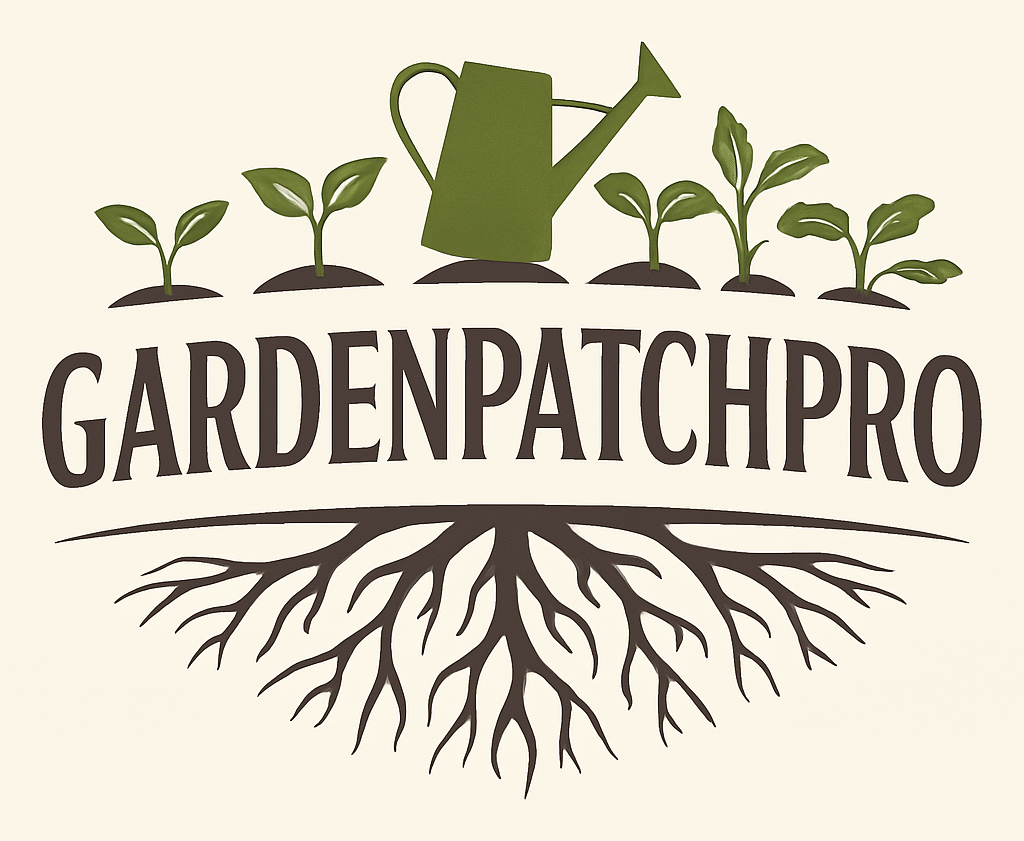14 Birdhouses Ideas for Attracting and Housing Backyard Birds Easily
Many people enjoy adding birdhouses to their outdoor spaces to attract birds and support local wildlife. Birdhouses can vary in style, size, and materials, offering options for both beginner and experienced builders. They provide safe places for birds to nest, which helps encourage bird activity in yards and gardens.
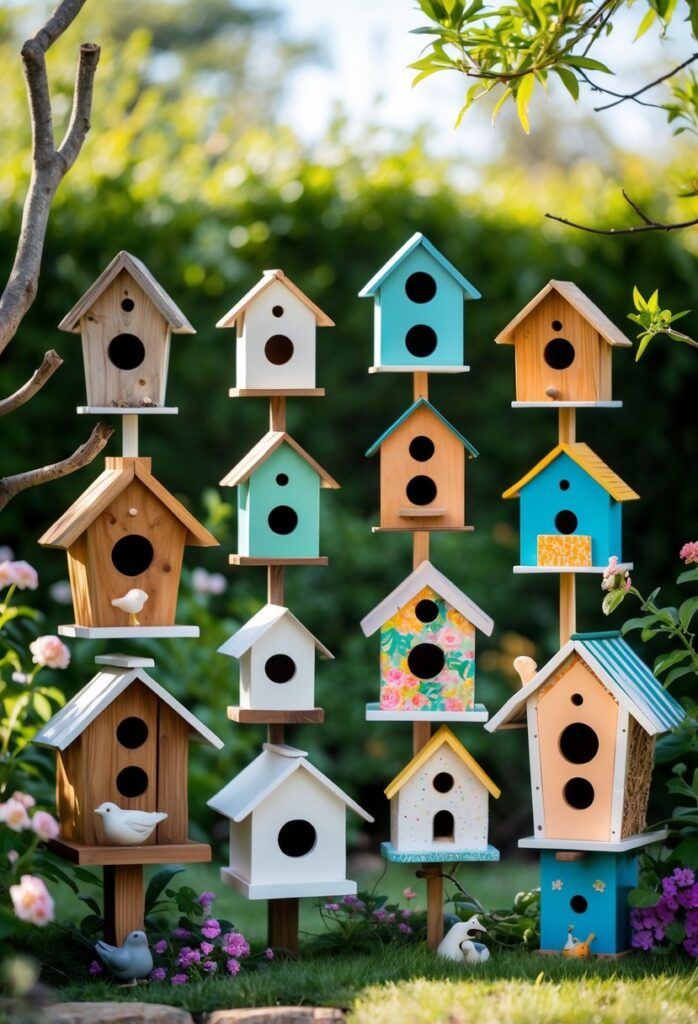
Birdhouses also add visual interest and charm to outdoor areas while serving an important role in bird conservation. This article presents 14 birdhouse ideas that combine function with creative designs, helping readers find inspiration for their own projects.
1) Rustic Barnwood Birdhouse with Leaf Roof
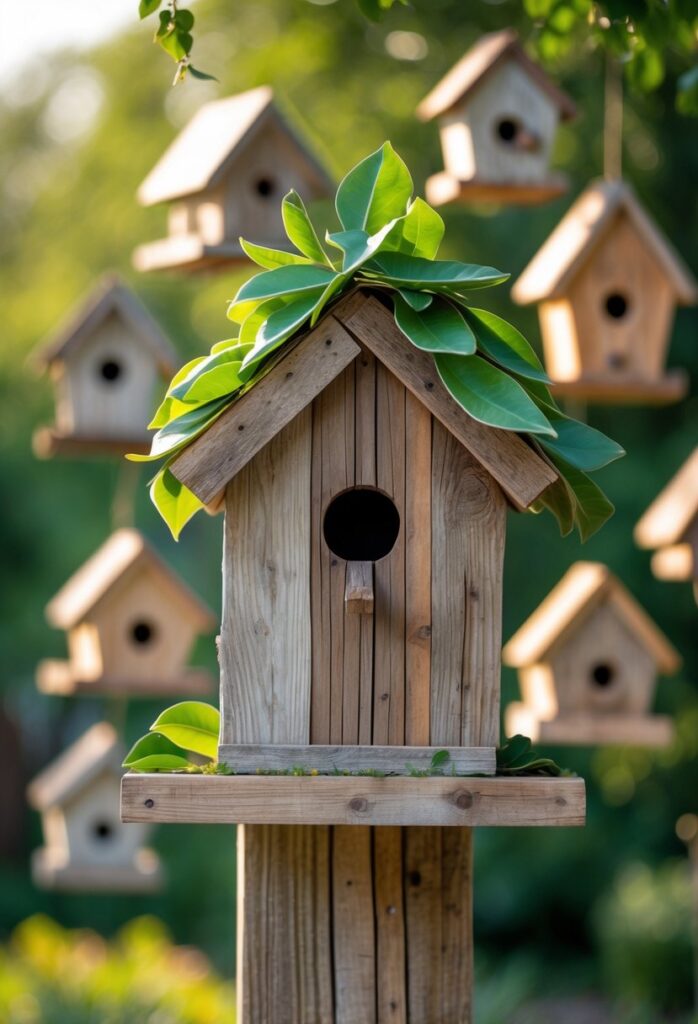
This birdhouse features a simple design using reclaimed barnwood for a natural, weathered look. The wood gives it a rugged charm that fits well in outdoor spaces like gardens or backyards.
The roof is covered with decorative metal or wooden leaves. These leaf shapes add a unique touch while helping to protect the birdhouse from rain. The roof also provides shade to keep birds cool in warm weather.
Its size and entrance hole fit small cavity-nesting birds such as chickadees and wrens. The rustic barnwood birdhouse offers a safe place for these birds to nest and rest.
Using reclaimed barnwood makes the birdhouse eco-friendly and durable. It blends well with natural surroundings and can last for many seasons when maintained properly.
More ideas for rustic barnwood birdhouses can be found with detailed plans and inspiration for DIY projects at this page on rustic barn wood birdhouse ideas.
2) Simple One-Design DIY Birdhouse
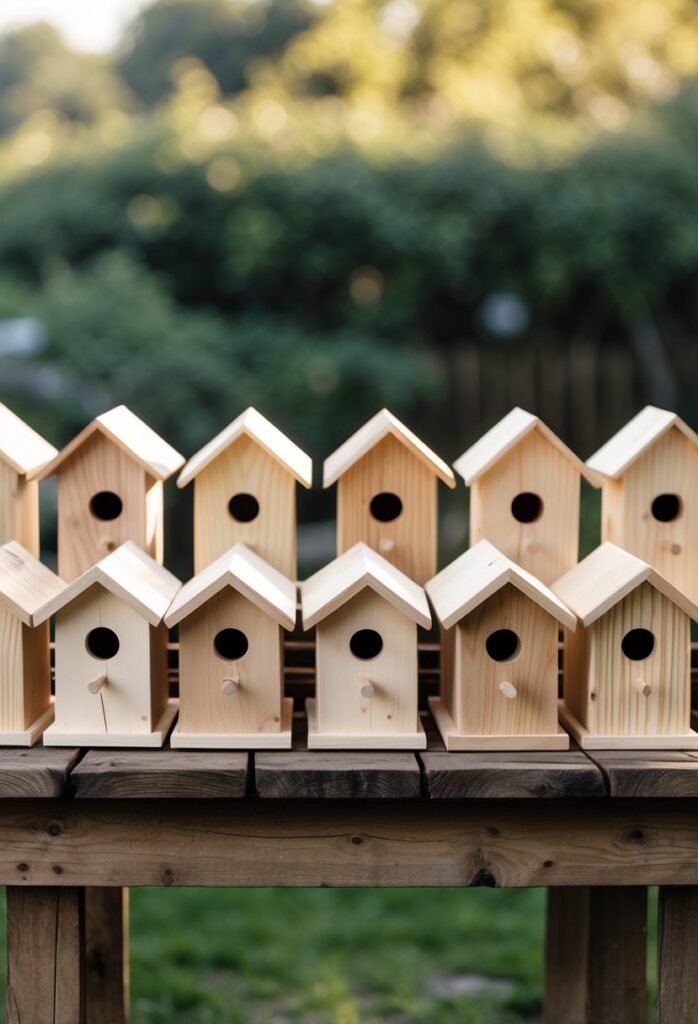
This birdhouse idea uses a single, easy-to-follow design. It can be built with just one piece of wood, like a fence picket. This keeps costs low and the project simple.
The design focuses on basic cuts and assembling without many tools. This makes it perfect for beginners or those who want a quick build. It also works well for family projects.
The birdhouse provides a safe spot for small birds to nest. Its basic shape can fit many outdoor spaces, such as gardens or balconies. Instructions for a similar easy project can be found on a $3 DIY birdhouse video.
Building this one-design birdhouse helps avoid complicated steps. It teaches basic woodworking skills while creating a useful garden item. It is a practical option for people looking to start birdhouse making.
3) Modern Birdhouse Kit with Customization
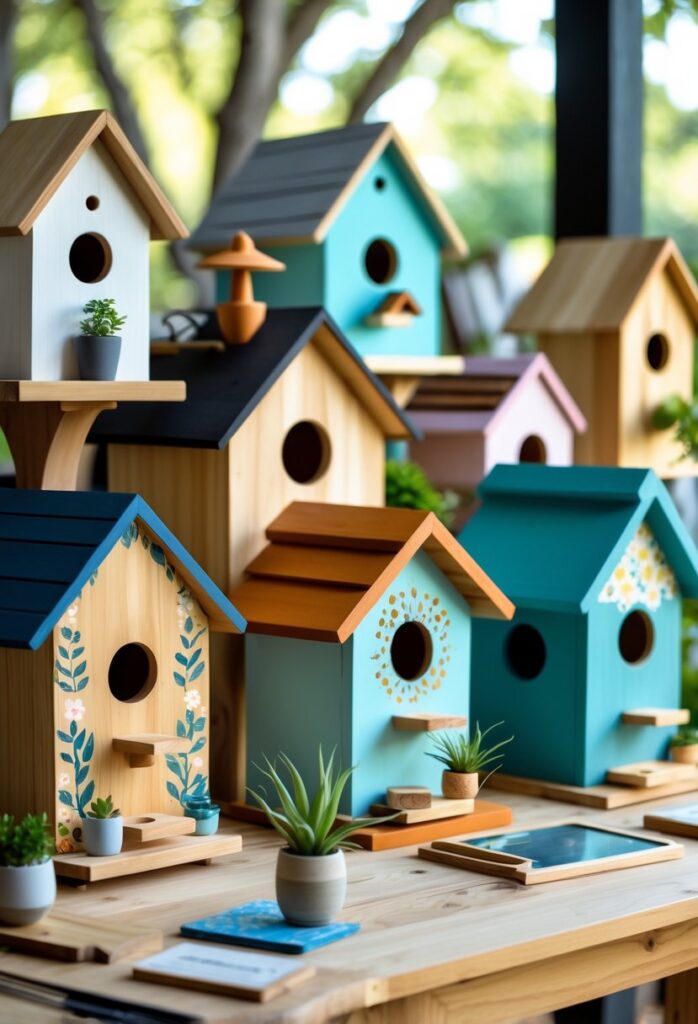
A modern birdhouse kit offers a simple way to build a stylish home for birds. These kits come with all the basic materials and easy-to-follow instructions. They are designed for beginners but still allow room for creativity.
The kits often include plain wood pieces that can be painted or decorated. This gives users the chance to customize the birdhouse to match their garden or personal style. Some kits let users add unique features like multiple rooms or modern shapes.
These kits are great for families, teachers, or anyone who wants a hands-on project. They teach about birds while allowing for artistic expression. The SparkJump Modern Birdhouse Kit is one example that supports easy building and customization for all ages.
Using a kit can save time on gathering materials and cutting wood. It also reduces the need for special tools. This makes it a practical choice for those who want a neat, modern birdhouse without the hassle. More about this type of project can be found at SparkJump’s modern birdhouse kit page.
4) Cottage Garden Birdhouse with Vine Post Mount
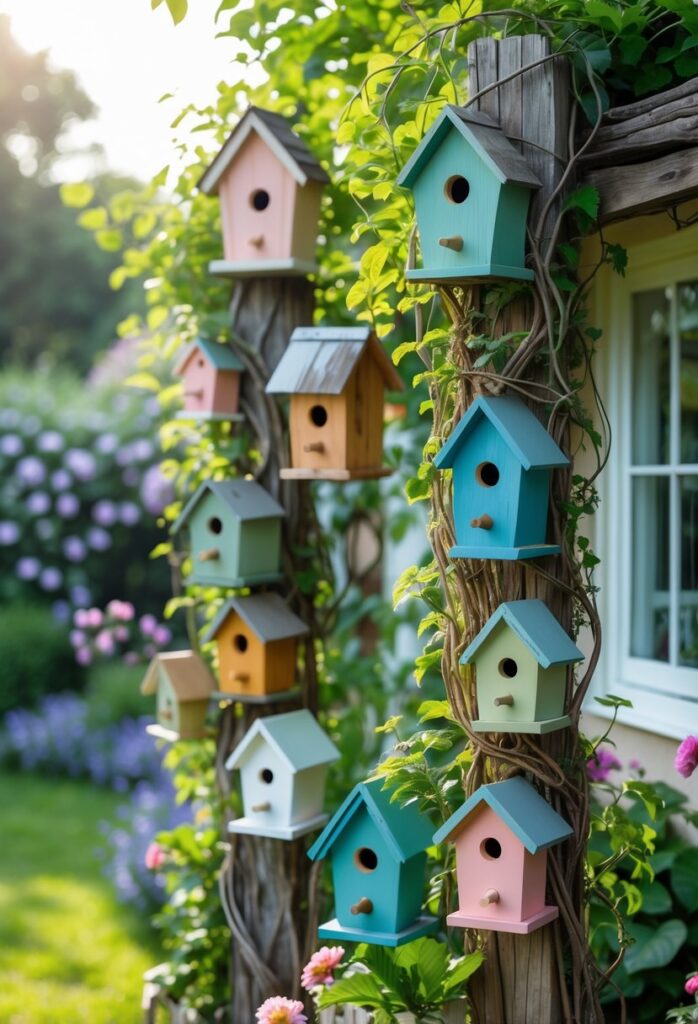
A cottage garden birdhouse often sits on a simple wooden post. To add charm, a vine can be grown up the post. This creates a natural, green look that blends the birdhouse into the garden.
The vine can be any climbing plant, like clematis or ivy. It covers the post without harming the birdhouse. It also provides extra shelter for birds.
Planting perennials around the base of the post adds color and attracts more wildlife. These flowers and plants make the area inviting for birds and gardeners alike.
This style fits well in garden spaces with a rustic or country theme. It makes the birdhouse both a useful and attractive feature.
For ideas on mounting a birdhouse on a post with vines, see Birdhouse Ideas I LOVE for a Cottage Garden.
5) Mini Birdhouse Decorated with Paint Hacks
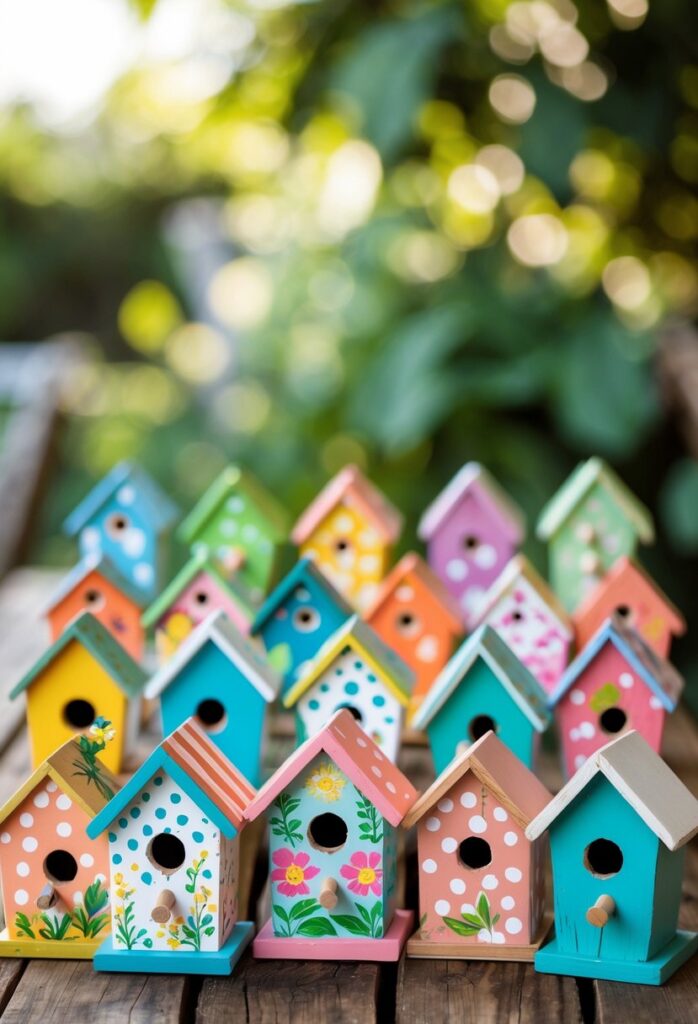
Mini birdhouses are small and easy to paint, making them great for quick decorating projects. They can be customized using simple paint hacks that add color and style without much effort.
Using acrylic paints works well on these birdhouses because they dry fast and offer vibrant colors. One popular hack is to use painter’s tape to create clean stripes or shapes before painting.
Another idea is to apply a base coat, then use a sponge or brush to dab on different colors. This technique gives a textured and interesting look. Stencils can also help create neat patterns without needing advanced painting skills.
Decorating mini birdhouses this way can turn plain wood into charming art pieces. These painted mini birdhouses can be used indoors as decor or placed outside to attract birds. For more ideas on painting techniques and creative designs, see Genius Mini Birdhouse Hacks for Beautiful Home Decor on a Budget.
6) Scrap Wood Recycled Birdhouse
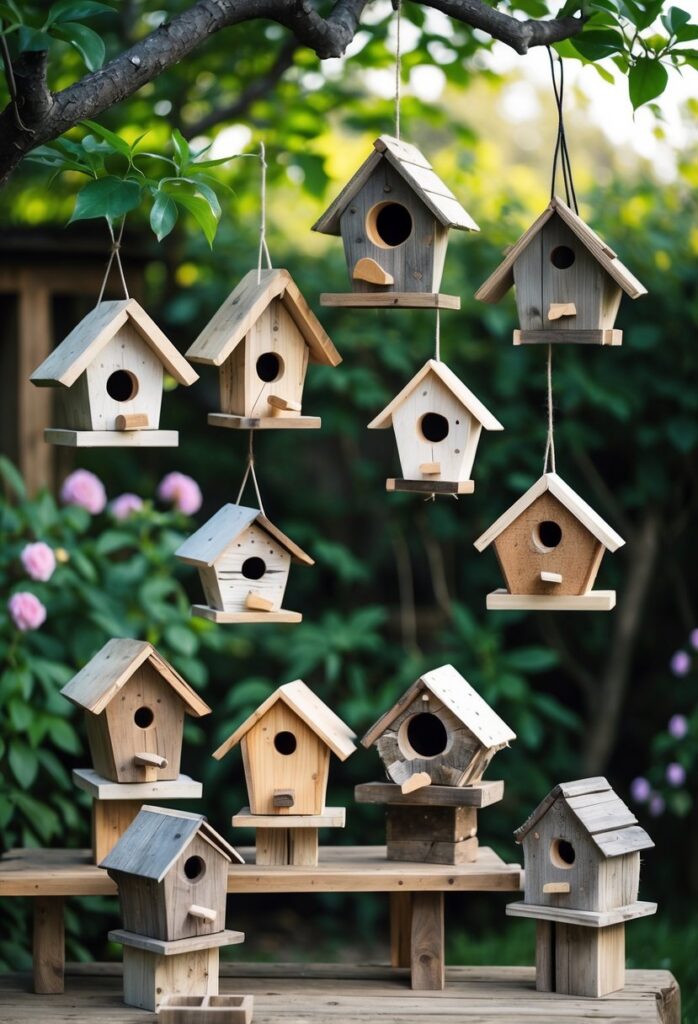
A birdhouse made from scrap wood is a simple and eco-friendly project. It uses leftover wood pieces that might otherwise be thrown away. This helps reduce waste and creates a functional home for birds.
Builders often choose different types of scrap wood to give the birdhouse a unique look. They can mix and match shapes and colors. This also adds character to the design.
The size and shape depend on the bird species they want to attract. Using reclaimed wood can make the birdhouse sturdy and weather-resistant. It is important to avoid treated wood that may harm birds.
Many people find it easy to build a recycled birdhouse with basic tools. Instructions and ideas for this project can be found online, such as on the page about simple birdhouses from scrap wood. It is a great way to combine crafting with sustainability.
7) Multi-Compartment Bird Condo
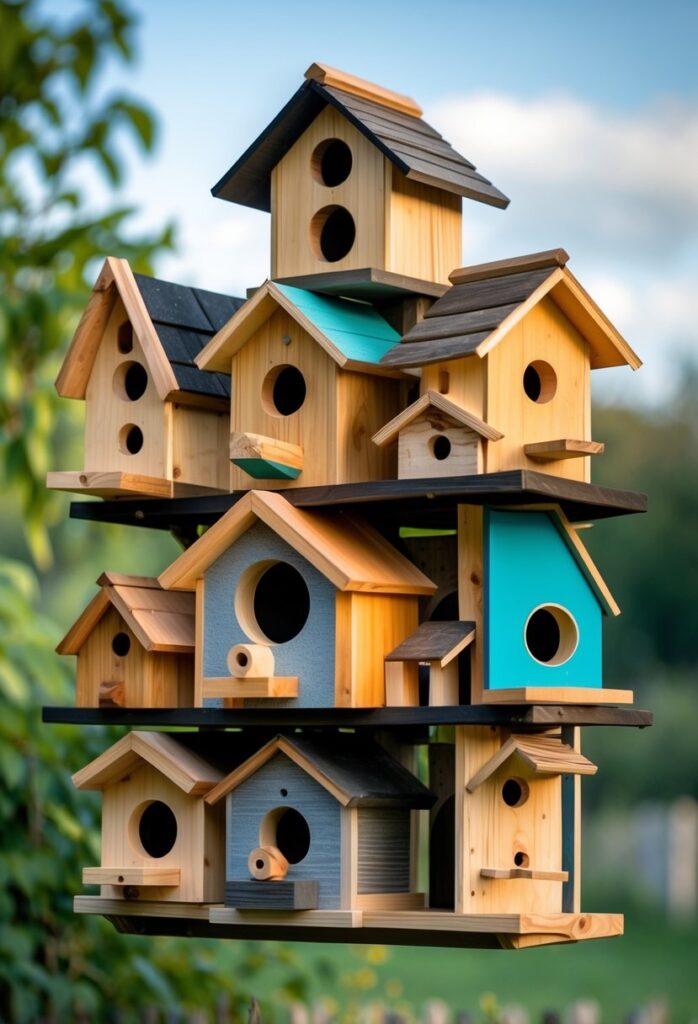
A multi-compartment bird condo is designed to house several bird families at once. It usually has multiple nesting boxes arranged side by side or stacked. This setup helps attract different bird species to the same area.
The compartments often have specific sizes to suit small birds like wrens and bluebirds. Some designs include removable dividers and roofs, making it easy to clean after each nesting season. This helps keep the birdhouse safe and ready for new visitors.
These condos provide shared living spaces while giving birds enough privacy. They can be built from wood and sometimes include creative details to blend into a yard or garden. A well-planned bird condo supports local wildlife and adds interest to outdoor spaces.
Detailed plans and ideas for multi-unit birdhouses can be found in resources that explain dimensions and construction tips. For those interested in building one, there are step-by-step guides that cover the process from start to finish, including design and maintenance considerations. More information on this can be found at DIY birdhouse plan sites like DIY Birdhouse Plans: Build an Easy Multi-Bird Family Condo.
8) Birdhouse with Perennial Plant Base
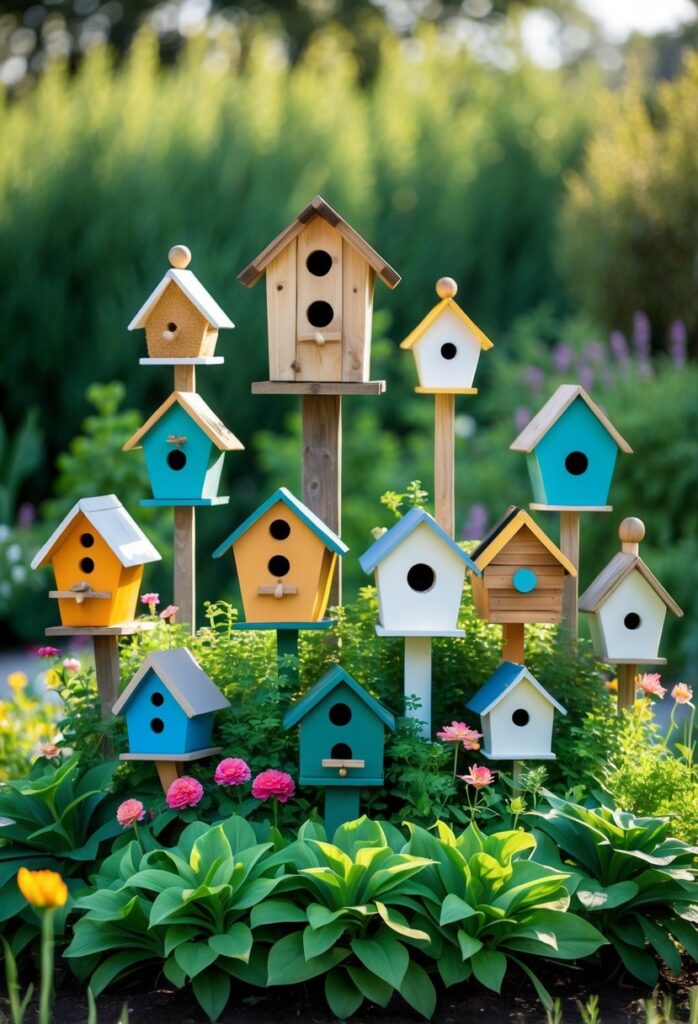
A birdhouse with a perennial plant base combines shelter and greenery in one design. The birdhouse is often mounted on a post surrounded by perennial plants. These plants grow back every year, creating a natural, lasting garden feature.
Perennials like boxwoods or shade-loving flowers work well. They add color and texture around the birdhouse. The plants can also help attract birds by providing food and cover nearby.
This setup fits nicely in cottage gardens or natural-style landscapes. It creates a quiet, inviting space for birds while enhancing the garden’s look. Mounting the birdhouse on a sturdy post keeps it safe from ground predators.
Choosing hardy, low-maintenance perennials means the garden base requires less care over time. A birdhouse on garden post with boxwoods is one example that blends style and function well.
9) Birdhouse with Front Door Entrance
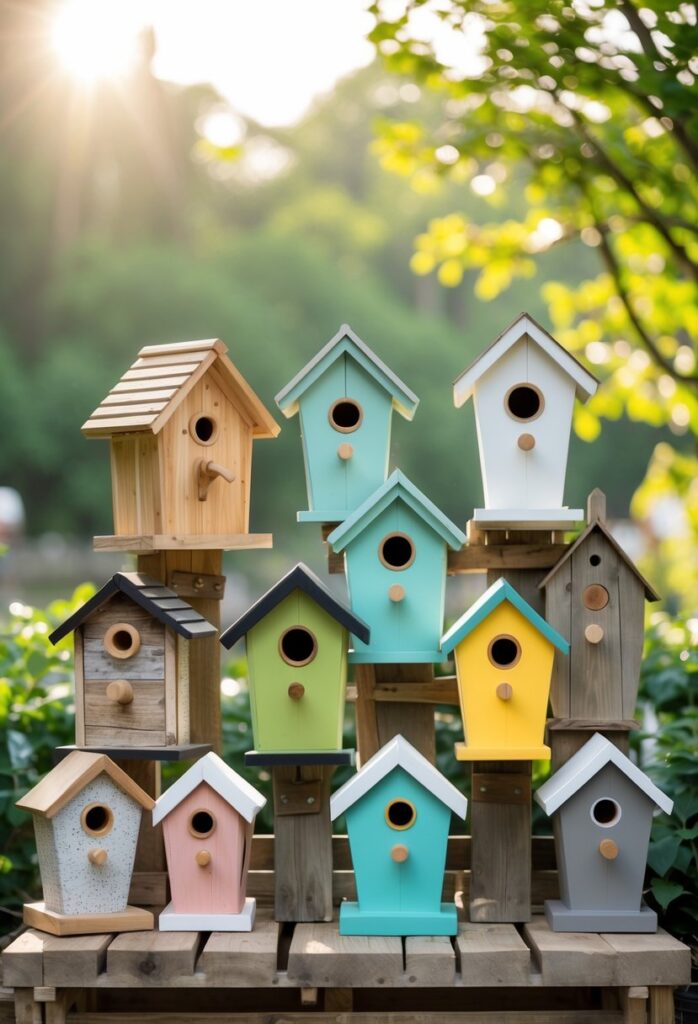
This type of birdhouse features a front door that opens, allowing easy access for cleaning and maintenance. The door is usually small and fits well to protect birds from weather and predators.
It helps keep the inside dry and safe. Many bird lovers build these houses to check nests without disturbing the birds too much.
The door size is designed to let birds in but keep larger animals out. This style often uses simple materials like wood and may have basic hinges for the door.
Birdhouses with front door entrances provide a practical way to care for birds while giving them a secure home. The design can vary, but the door is the key feature for easy use and safety.
For an example of this design, see a handmade birdhouse with a functional front door.
10) Rustic Wooden Birdhouse for Balconies
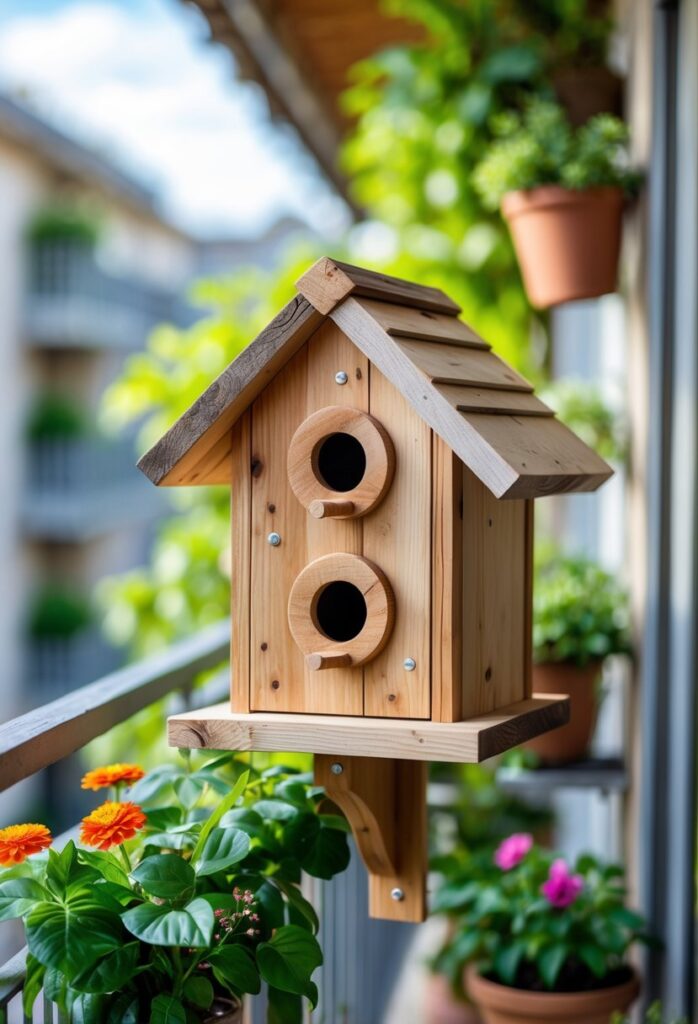
A rustic wooden birdhouse suits balconies well, adding charm without taking much space. It provides a safe place for small birds to nest, making urban areas more bird-friendly.
These birdhouses often use weathered or reclaimed wood, giving them a natural look. The materials are durable enough to resist outdoor conditions on balconies.
Simple designs with a pitched roof and small entrance hole work best. They keep birds protected from rain and sun while fitting easily in limited balcony areas.
Hanging or mounting the birdhouse on a balcony railing or wall keeps it stable. This also helps keep it away from predators and disturbances.
Rustic birdhouses come in many styles, from plain wooden boxes to those with small decorative features. Many use natural finishes or soft paint to blend with outdoor plants.
For ideas on rustic birdhouse designs suitable for balconies, see the wide selection of rustic birdhouse examples available online.
11) Compact Birdhouse for Small Gardens
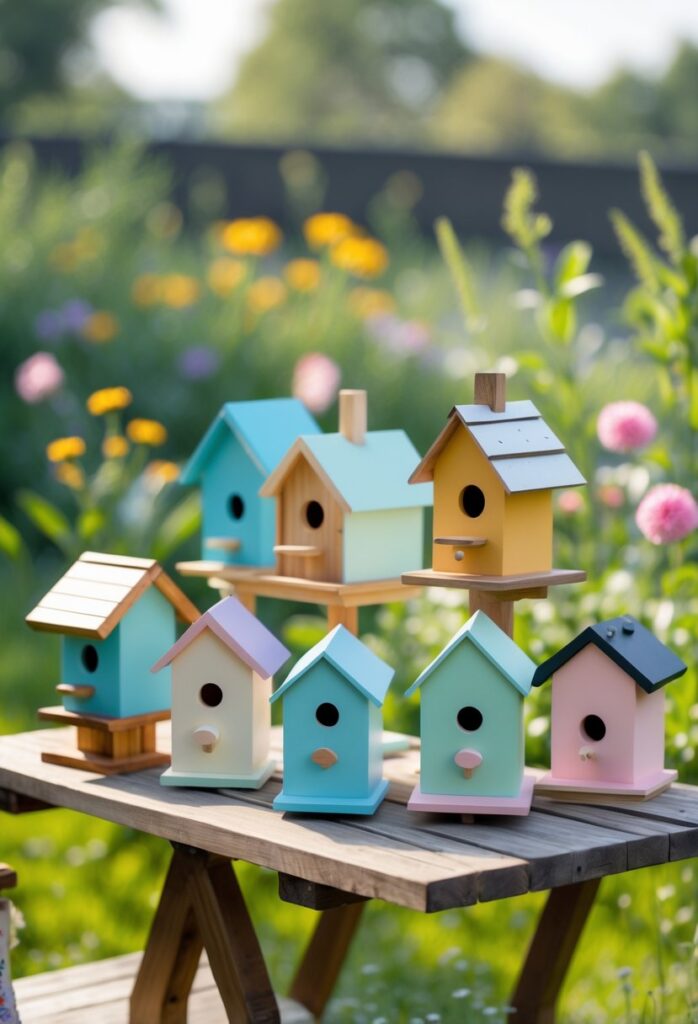
A compact birdhouse is ideal for small gardens where space is limited. It provides a cozy nesting spot without taking up much room. These designs fit easily into tight areas like balconies, patios, or tiny yards.
Proper ventilation and drainage are important features in a compact birdhouse. They help keep the interior dry and safe for birds. The entrance hole should match the size of local bird species to attract the right visitors.
Many compact birdhouses avoid perches since they can help predators. Easy-clean designs with hinged roofs or sides make maintenance simple. Selecting a birdhouse with these features helps create a safe and welcoming environment in small outdoor spaces.
For ideas on choosing birdhouses that fit well in small areas, you can explore compact birdhouse designs that maximize space while attracting native birds to your garden. More details about this can be found in articles about birdhouse designs for small gardens and their benefits.
12) Colorful Painted Birdhouse for Attracting Birds
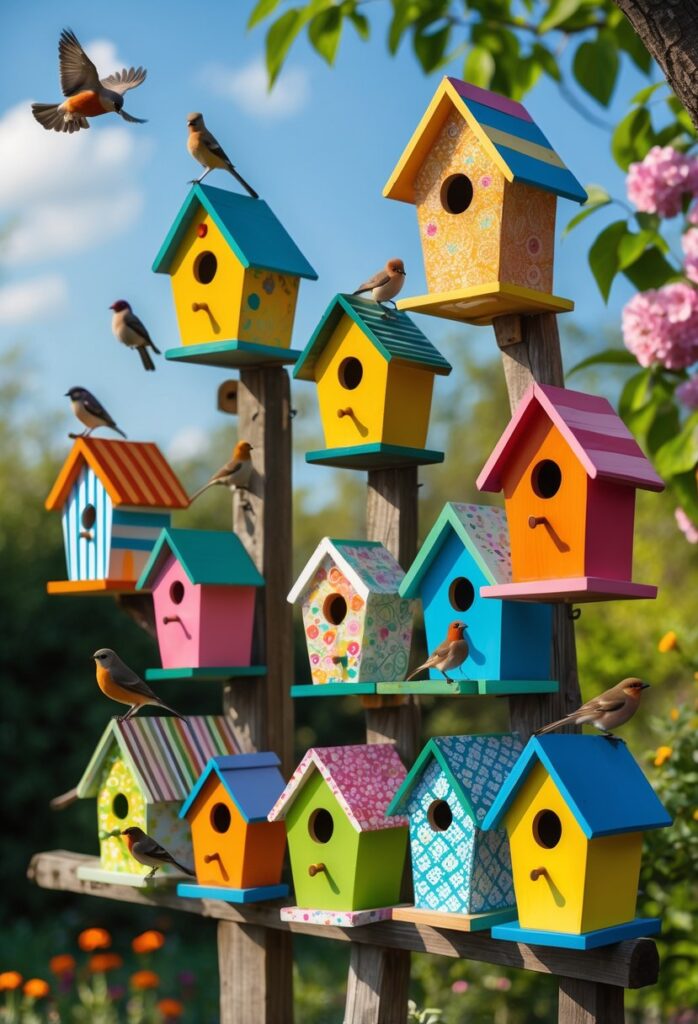
A colorful painted birdhouse can make a great addition to any garden. Bright colors can catch the attention of birds, helping to guide them to a safe nesting spot.
Using water-based paints is best because they are safe for birds and withstand outdoor weather. These paints also dry quickly and do not release harmful chemicals.
Patterns like stripes, polka dots, or simple floral designs add charm without overwhelming the natural look. Birds tend to prefer birdhouses that blend well with their environment but offer a little visual interest.
Painting the birdhouse with colors that match local flowers or trees can help it fit into the landscape. Birds are more likely to use birdhouses that feel safe and familiar.
For more ideas and tips on painting birdhouses to attract birds, see colorful painted birdhouse ideas at Birds and Blooms.
13) Birdhouse with Easy Assembly for Beginners
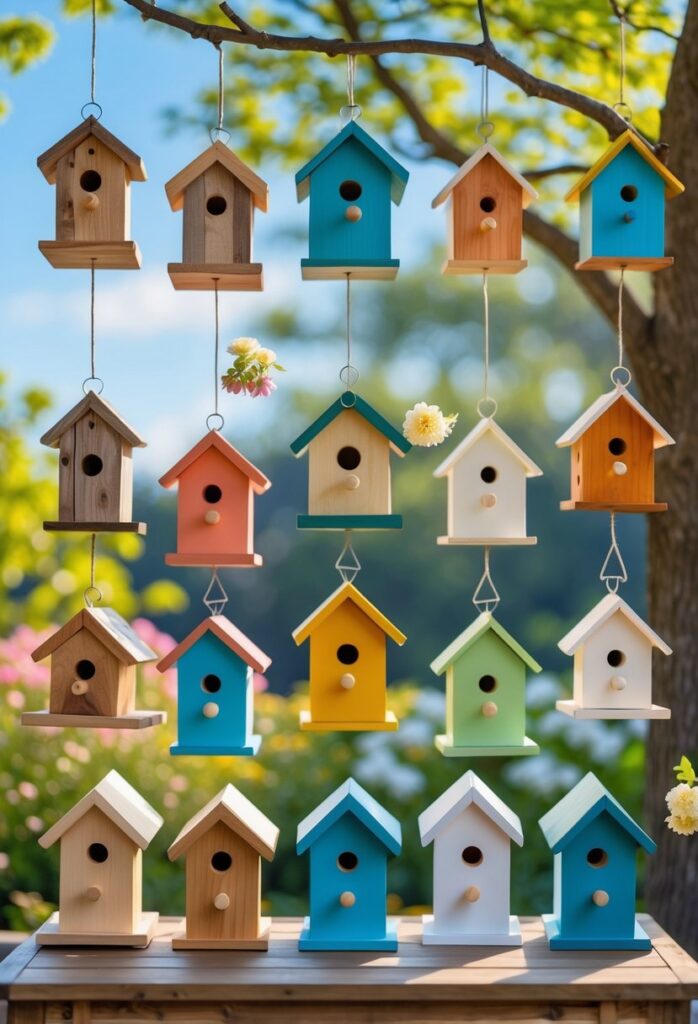
This birdhouse design is perfect for those new to woodworking. It uses simple materials and basic tools, making the building process straightforward. The parts fit together easily, so it can be assembled quickly without much experience.
Many easy-assembly birdhouses come in kits or include clear step-by-step instructions. These guides help beginners understand how to join pieces properly. Some designs avoid complex cuts or nails, which reduces errors.
Using lightweight wood like cedar or pine makes handling easier. The birdhouse usually has pre-drilled holes or simple slots to guide assembly. This helps the builder focus on placing parts correctly rather than measuring or cutting.
A good example is the modern-style birdhouse kit that provides all needed parts and easy directions. It allows beginners to build an appealing and functional birdhouse with little stress. More details and options can be found in the easy DIY birdhouse projects and beginner woodworking birdhouse plans.
14) Vintage Style Birdhouse with Shingle Roof
A vintage style birdhouse with a shingle roof offers a classic look that blends well in gardens. The shingles provide good protection from rain and sun, which helps keep the birdhouse durable.
This type of birdhouse often uses weathered wood or reclaimed materials to achieve an authentic old-fashioned feel. Shingles can be made from wood, asphalt, or other materials, depending on the desired look and budget.
The roof shingles are attached starting from the bottom edge, overlapping upwards to prevent water from seeping in. This method is similar to real roofing and adds to the birdhouse’s charm.
Some builders add small roof overhangs to protect the walls and entrance from weather damage. They may also include perches or decorative elements that keep the vintage style without harming the birds.
For ideas on making a vintage birdhouse with a shingle roof, there are tutorials and examples available online, such as on this restoration project and community posts. These sources show how to combine style with function effectively.
Choosing the Right Birdhouse Design
Selecting a birdhouse involves considering materials that last outdoors and features that keep birds safe and comfortable. The design should protect birds from weather and predators while allowing easy access for cleaning.
Materials and Durability
Birdhouses made from untreated wood are best because they provide natural insulation and breathe well. Cedar, pine, and poplar are popular choices because they resist weather damage without toxic treatments.
Avoid using plastic or metal, as these can heat up too much or cause condensation inside. The wood should be thick enough to shield birds from rain and cold but not so thick that it traps moisture.
A sloped roof helps rainwater run off. Including small holes near the top provides ventilation, and drainage holes at the bottom prevent water buildup. These features extend the birdhouse’s life and create a healthy environment for birds.
Safety and Accessibility for Birds
The entrance hole size must match the species intended to use the house. Too large an opening invites predators; too small limits access. Birds like bluebirds and chickadees need different hole sizes for protection.
Avoid perch attachments, as they give predators a place to land. Instead, a smooth, plain surface around the entrance is safer.
Hinged or removable panels make cleaning easier, which is important for preventing disease. Place the birdhouse out of direct sunlight to avoid overheating inside.
Good ventilation and drainage reduce mold, keeping nests safe and birds healthy.
Installation and Maintenance Tips
Birdhouses must be placed carefully to protect birds and encourage use. Regular maintenance ensures the houses stay safe and clean for new families each season.
Optimal Placement for Birdhouses
Birdhouses should be mounted 5 to 10 feet above the ground to keep birds safe from predators. They should face away from prevailing winds to provide shelter from harsh weather.
It is best to place birdhouses near trees or shrubs. This gives birds quick access to cover without putting them in areas with high human traffic.
Avoid placing birdhouses too close to bird feeders or baths to reduce competition and disease risk. Also, stay clear of pesticide-treated plants and noisy locations.
A good rule is to space several birdhouses at least 10 feet apart. This prevents territorial fights and increases the chances for multiple families to nest.
Seasonal Care and Cleaning
Clean birdhouses twice a year—once in late winter before nesting season and once after chicks leave. Remove old nesting material and use a bleach solution (1 part bleach to 9 parts water) to disinfect the interior.
Check for damage, such as cracked wood or loose parts, and repair them promptly. Ensure ventilation holes and drainage holes are clear to keep the inside dry and cool.
Remove any perches, as they can help predators. Hinged or removable panels make cleaning easier and safer.
Regular inspection helps identify issues before they become serious, ensuring birdhouses remain a hospitable home.
For more detailed guidance, see birdhouse maintenance tips.
Frequently Asked Questions
Birdhouse painting often includes layering different colors or using sponging and stenciling to create texture and interest. Many free birdhouse plans come from woodworking websites and birdwatching groups, offering designs for both beginners and experienced builders.
What are some creative painting techniques for birdhouses?
Techniques like dry brushing add a rustic look, while sponging can create a natural texture. Stenciling patterns such as leaves or vines adds visual interest without overwhelming the design.
Where can I find unique birdhouse plans that are available for free?
Websites geared toward bird lovers and woodworking communities often share free plans. These include simple DIY designs and more decorative styles like rustic or modern birdhouses.
What are the essential steps in building a DIY birdhouse?
First, select weather-resistant wood and cut pieces to size. Assemble with screws or nails, ensuring ventilation and drainage holes. Sand edges smooth and paint or seal for durability.
How do I choose the right measurements for a birdhouse plan?
Measurements depend on the bird species you want to attract. Entrance hole size and interior dimensions must fit their needs, usually detailed in birdhouse guides and online plan libraries.
Which colors are known to attract birds to birdhouses?
Natural colors like green, brown, and gray blend well with outdoor surroundings and are inviting to many birds. Avoid bright, shiny paints, which can deter nesting.
What is the ideal placement for a birdhouse to ensure bird safety and comfort?
Place the birdhouse in a quiet, open area away from heavy foot traffic or predators. Mount it on a post or tree at least 5 to 10 feet above ground, avoiding direct sunlight or strong winds.
For more details on ventilation and placement, see outdoor bird decor FAQs.
